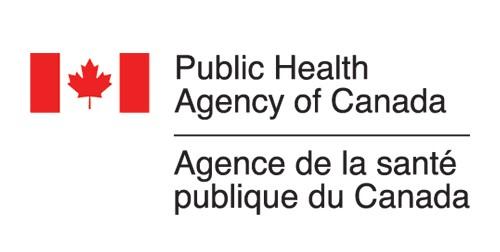Ottawa – The pandemic continues to create stress and anxiety for many Canadians, particularly those who do not have ready access to their regular support networks. Through the Wellness Together Canada online portal, people of all ages across the country can access immediate, free and confidential mental health and substance use supports, 24 hours a day, seven days a week. PocketWell, a free companion app to the WTC online portal, provides another way to help Canadians access online mental health and substance use resources, and measure and monitor aspects of their mental well-being.
The Public Health Agency of Canada (PHAC) continues to monitor COVID-19 epidemiological indicators to quickly detect, understand and communicate emerging issues of concern. The following is a brief summary of the latest national trends.
For additional COVID-19 data and analyses, the PHAC posts the following reports:
- Daily Epidemiological Update,
- COVID-19 vaccine coverage data,
- Reported Side Effects Following COVID-19 Vaccination in Canada
- COVID-19 trend reports, including weekly case by case Epidemiological Report
With a shift to more targeted testing, a range of other indicators, from laboratory test positivity and wastewater surveillance to daily numbers of people in hospitals and critical care continue to be important for ongoing monitoring trends. Although provincial and territorial (P/T) reporting frequency and intervals vary, recent 7-day averages (ranging 7-days ending from April 16-21, 2022 across P/Ts) shows continued widespread activity across Canada. Nationally, laboratory test positivity during the latest 7-day period (April 13-19, 2022) remains elevated at 18%. Similarly, wastewater signals remain elevated in many areas of the country, however there is considerable variability from testing sites across the country.
While there are early signs that transmission may be nearing a peak in some jurisdictions, it is still too soon to tell whether a possible increase in in-person contact rates during the long weekend could impact this trend. Although concerning, the recent rise of hospitalisation rates in several jurisdictions appears to be still manageable, with critical care currently trending at low levels. Given increased population immunity from high vaccine coverage and many recent infections, we could see less of an impact on hospitalisation trends than occurred during earlier waves of the pandemic. Nevertheless, keeping infection rates down remains key to protecting vulnerable populations, reducing severe outcomes and dampening the overall impact on the health system.
As we expect the SARS-CoV-2 virus to continuously evolve, we are closely monitoring the domestic and international situation and preparing for new variants, including possible recombinant variants that can arise from genetic mixing during co-infection with two variants. Currently, the BA.2 sub-lineage of the Omicron variant accounts for over 70% of recent viruses sequenced in Canada and is steadily increasing. While BA.2 is even more transmissible than the BA.1 sub-lineage of Omicron, it appears to have a similar severity and symptom profile.
Because the Omicron variant is immune evasive, two doses of COVID-19 vaccines offer less protection against Omicron than against previous variants. Fortunately, evidence shows that boosters can help increase antibody levels that wane over time after the second dose. Although vaccine effectiveness against infection decreases over time, evidence shows that two doses of mRNA vaccines generally maintain good effectiveness against severe outcomes across variants, and a booster further increases vaccine effectiveness to over 90% against severe outcomes. Thus health authorities continue to strongly recommend up-to-date COVID-19 vaccination for all eligible people, including for those who may have been previously infected.
Currently, over 5.0 million eligible Canadians need one or more doses to complete their primary series and many others are eligible to get a booster dose to help improve protection that may have decreased since their second dose and to provide even better protection against severe illness from Omicron. In particular, getting a booster dose if you are eligible, and especially for those aged 50 years of age or older, is very important, given the risk of severe illness increases with increasing age. As of April 21st, over 18 million third doses have been administered to date. National data as of April 10, 2022 indicate that over 84% of seniors aged 70 years or older and 61%-75% of 50-69 year olds have received an additional dose.
During the transition phase of the pandemic and beyond, our best advantage is to maintain caution and a state of readiness as we prepare our surge capacity for future response, while not forgetting the personal protective habits we have learned. At the individual level, this can be best achieved by keeping COVID-19 vaccinations up-to-date, including getting a booster dose(s) as recommended. At the same time, continuing to follow public health advice tailored to local epidemiology and circumstances can help guide your individual and family risk assessment and use of personal protective practices to reduce your risk of exposure and spreading the virus. In particular, properly wearing a well-fitted and well-constructed face mask, avoiding crowding, and getting the best ventilation possible in indoor spaces, are layers of protection that can reduce your risk in all settings.
We can also stay healthier by getting up-to-date with other recommended vaccines and routine vaccines for children and adults. Vaccination is a cornerstone of public health responsible for saving more lives in the past 50 years in Canada than any other health intervention. Unfortunately, data show there are not only gaps in coverage for recommended COVID-19 vaccinations, but also gaps in coverage for other serious infectious diseases due to delayed or missed vaccinations during the pandemic. As tomorrow marks the beginning of National Immunization Awareness Week in Canada, let’s be reminded of the importance of vaccinations in protecting our health throughout our lives. I want to personally take this opportunity to thank the millions of Canadians who are protecting themselves and others from serious infectious diseases by getting vaccinated. I also want to extend my thanks to Canada’s healthcare workforce, immunizers, volunteers, community workers and researchers for all the work they’ve done and continue to do to build a healthier Canada through immunization.
For additional information regarding vaccination in your area, reach out to your local public health authorities, healthcare provider, or other trusted and credible sources, such as Immunize.ca and Canada.ca, which includes information to help Canadians understand the benefits of being vaccinated against COVID-19.
Canadians can also go the extra mile by sharing credible information on COVID-19 risks and prevention practices and measures to reduce COVID-19 in communities. Read my backgrounder to access more COVID-19 Information and Resources on ways to reduce the risks and protect yourself and others, including information on COVID-19 vaccination.







